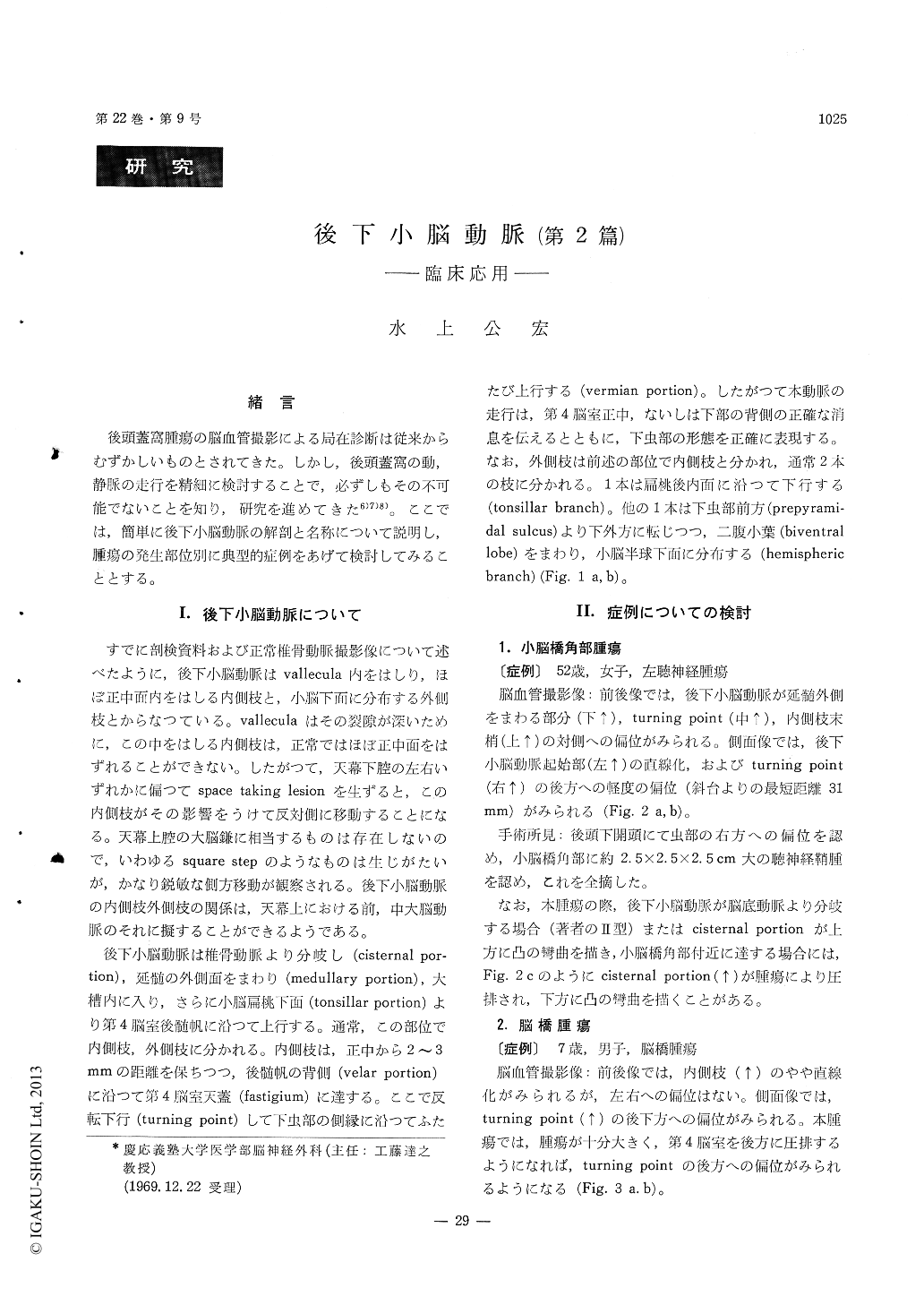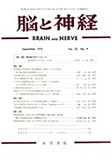Japanese
English
- 有料閲覧
- Abstract 文献概要
- 1ページ目 Look Inside
緒言
後頭蓋窩腫瘍の脳血管撮影による局在診断は従来からむずかしいものとされてきた。しかし,後頭蓋窩の動,静脈の走行を精細に検討することで,必ずしもその不可能でないことを知り,研究を進めてきた6)7)8)。ここでは,簡単に後下小脳動脈の解剖と名称について説明し,腫瘍の発生部位別に典型的症例をあげて検討してみることとする。
1) In part I, the author clarified the diagnostic value of the posterior inferior cerebellar artery from anatomical and angiographic stand points.
2) In part II, characteristic angiographic changes of this artery in posterior fossa tumors in varying location were described.
3) The key findings to determine the locali-zation of the tumor are the displacement of "turn-ing point" and "bifurcation" designated by the author both in A-P and lateral projections.
4) In A-P projection, the displacement of these two points acrossed midline suggests the hemispheric localization of the tumor, in which the more post-eriorly the tumor situates, the more maximal dis-placement of the distal portion of vermian portion is obserbed.
5) The lateral displacement of "turning point" indicates that the tumor locates in the inferior portion in inferior vermis or within fourth ventricle. But these changes depend upon the origin and the direction of growth of the tumor.
6) Tumors of brain stem or superior vermis produce no lateral displacement of this point.
7) The lateral angiogram is more sutiable for the determination of the localization of the tumors because the "turning point" in most cases locates bneath the fastigium and vermian portion describes the cunfiguration of inferior vermis.
8) The recognition of the displacement of "turn-ing point" into each directon makes the more precise localization of the tumor in lateral projection.

Copyright © 1970, Igaku-Shoin Ltd. All rights reserved.


